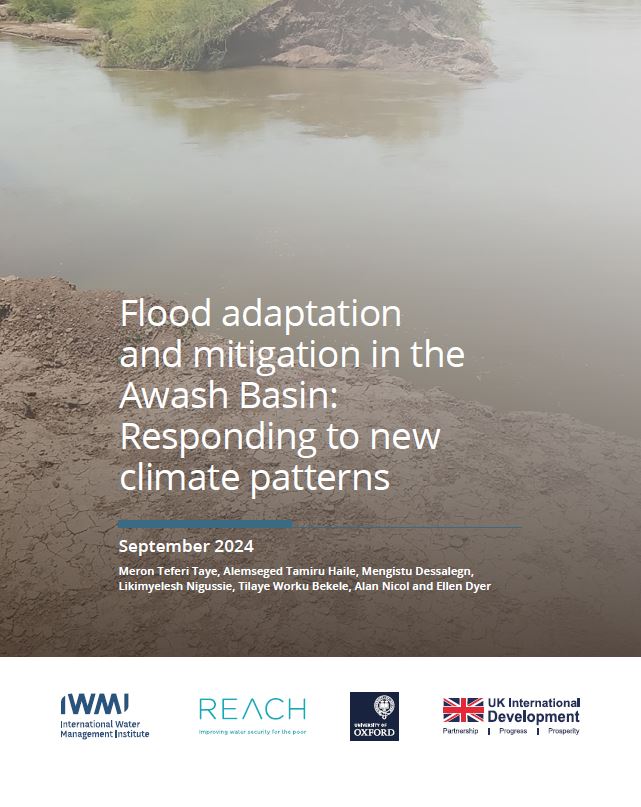Meron Teferi Taye, Alemseged Tamiru Haile, Mengistu Dessalegn, Likimyelesh Nigussie, Tilaye Worku Bekele, Alan Nicol and Ellen Dyer (2024)
The Awash Basin in Ethiopia experiences frequent flooding, sometimes with devastating consequences. Climate change is now creating new flood regimes in different parts of the basin and reshaping the interaction of flooding with rapidly changing communities. This is causing heightened risk, particularly for the most vulnerable communities across the basin, and requires new forms of management and response.
This study explores the physical changes in rainfall and landscapes leading to major flood events and examines the interaction of physical phenomena with societal and economic dynamics across the basin’s upper, middle, and lower reaches. The study’s multi-dimensional perspective includes analysis of hydroclimatic variables at the basin level including global drivers, flood characterization in selected catchments, and understanding of affected communities at sub-catchment levels. Selected catchments cover urban parts of the Awash, as well as agricultural, pastoral, and agro-pastoral areas. The major focus of the work was the recent extreme wet season in 2020 and associated flooding during which an estimated, 144,000 were displaced and 60,000 hectares were inundated. This was the most serious flood event in the basin since 1996.The core questions of the study are as follows:
1. What kind of rainfall was responsible for flooding in the summer of 2020 and what were the large-scale drivers?
2. What aspects of the 2020 flood characteristics were different from previous floods and what is the interaction between land use and land cover with flooding?
3. What are the non-climatic drivers of flooding and what are the impacts of flooding on different communities and their coping mechanisms?
The study results show that rainfall extremes during the summer of 2020 occurred in unexpected parts of the basin. Compared to the 1981-2010 baseline the lower part of the basin had a rainfall anomaly of more than 75%. Moreover, antecedent rainfall conditions from April to June contributed to soil saturation before the exceptional rainfall, as the months before July were wetter than the base period on average by 62%. Soil moisture conditions overall were wetter than average from 10 to 40% during these antecedent months which, combined with higher rainfall in the lower basin, and timing was a major cause of flooding in 2020.

